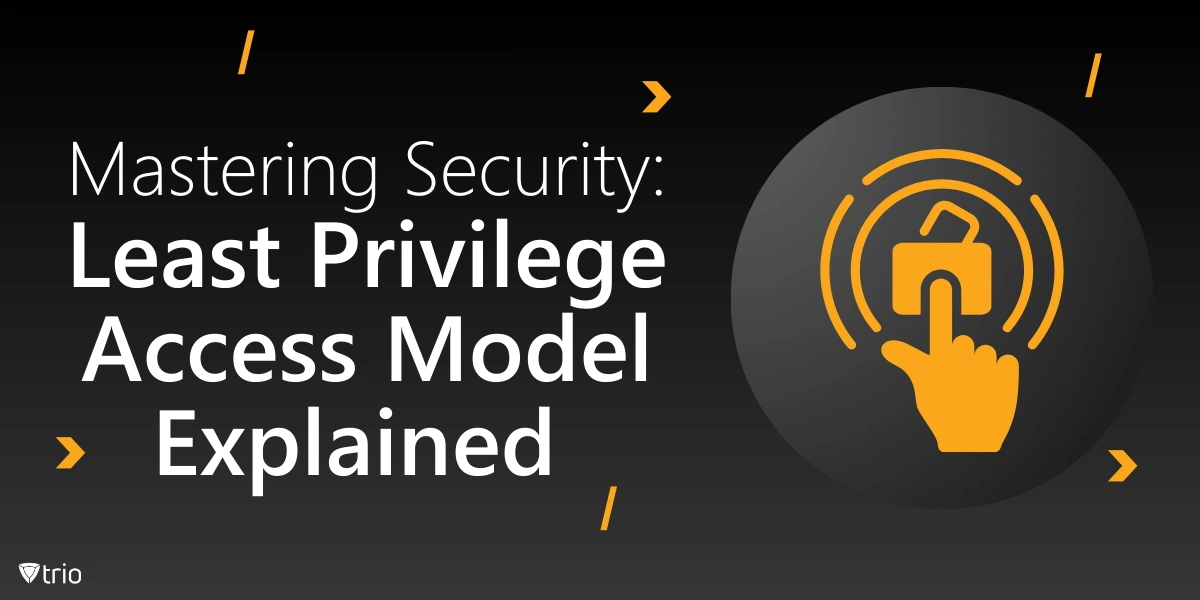Protecting data is a top priority for IT professionals. With cyber threats becoming more sophisticated and frequent, organizations must adopt robust strategies to safeguard sensitive information. Implementing the least privilege access model is a highly effective way to mitigate security risks and minimize the potential damage from cyber attacks or insider threats. Employee management plays a critical role here, as user access needs to be carefully aligned with job responsibilities to prevent misuse or unauthorized actions.
By restricting access and ensuring that users only have the permissions required to perform their roles, this model significantly reduces the likelihood of data breaches. But what exactly does this model entail, and how does it strengthen your organization’s defense? Let’s explore how it works and why it’s essential for modern cybersecurity.
What Is the Principle of Least Privilege Access Control Model?
The rule of least privilege access model, often referred to as the principle of least privilege (PoLP), ensures that users have only the minimum level of access necessary to complete their tasks. It’s a security measure rooted in simplicity: limit permissions to reduce attack surfaces. The meaning of least privilege is simple: restricting access reduces risk.
Role-based access control implementation is crucial in enforcing this principle. By categorizing permissions based on specific roles, organizations can manage access more efficiently and minimize unnecessary exposure. Think of it as assigning user access to resources only when absolutely required to perform a job. For instance, an employee who needs read-only access to financial data should not have write permissions or elevated privileges that could lead to errors or data breaches. Access control plays a crucial role in this strategy, and managing permissions can prevent privilege creep, where users accumulate unnecessary access over time.

Least Privilege Access Model in Cyber Security
The least privilege access model in cyber security aims to secure an organization’s data from unauthorized use or malicious attacks. By limiting privileges, organizations significantly decrease their vulnerability to insider threats and external breaches. Implementing this model is critical in environments where sensitive data is at stake.
Cyber criminals often target privileged users with access to confidential information, making privileged account management and privileged access management best practices essential. When elevated privileges are only granted when necessary, the risk of exposure diminishes. Access management tools are essential in tracking who has access to what, ensuring that permissions are routinely reviewed and minimized.
Principle of Least Privilege Access Model: Real-World Examples
Understanding how this model applies in practical scenarios can illuminate its significance. A principle of least privilege access model example in a corporate setting involves network administrators. While they may need elevated privileges to perform specific updates, they should revert to lower levels of access once the task is complete. This reduces the chance of unauthorized actions.
Another example is in software development environments. Developers might need read-write access to certain files but should not have permission to deploy changes in production without oversight. Restrictive access helps safeguard against unintentional errors or deliberate tampering. User account management policies that incorporate PoLP can protect the integrity of sensitive systems.
Key Elements of the Least Privilege Access Model
To fully understand the least privilege access model definition, one must consider its critical components. Firstly, identifying and categorizing user accounts is vital. IT professionals must determine what levels of access are required to perform specific tasks. Access control mechanisms should then enforce these permissions strictly.
Secondly, monitoring for privilege creep is crucial. Privilege creep occurs when users gradually accumulate more permissions than they need, often as they change roles or take on new tasks, without having their old access rights revoked. This accumulation poses a significant security risk, as excessive permissions increase the likelihood of unauthorized actions or data breaches. Regularly auditing permissions helps maintain restrictive access and prevent privilege creep. The model also emphasizes the temporary assignment of privileged access, granting it only when essential and revoking it afterward. This ensures that users do not retain unnecessary permissions, keeping the system more secure.

The Rule of Least Privilege Access Model: Benefits and Challenges
The rule of least privilege access model is highly effective but not without challenges. Its benefits include limiting the scope of potential data breaches, protecting sensitive assets, and simplifying security management. By confining permissions to a need-to-know basis, even if an account is compromised, the attacker’s capabilities are minimized.
However, implementing the principle in practice requires careful planning. Organizations must invest in comprehensive access management systems and automate permission audits. Balancing usability with security can be difficult, and poorly executed models may disrupt operations. Nonetheless, the protective gains far outweigh these obstacles, making PoLP indispensable.
How Trio Can Help
Implementing the least privilege access model becomes more streamlined with the right technology. Trio, a versatile MDM solution, supports organizations in managing privileged users and access control efficiently. Through automated auditing and granular policy settings, Trio helps reduce privilege creep and manage user access securely.
For organizations seeking to enhance their security posture, Trio offers features that align perfectly with PoLP principles. From managing privilege access to monitoring user only accounts, the solution ensures data integrity while simplifying operations. Additionally, Trio can assist in access governance, making it easier to keep permissions in check. Interested in seeing how Trio works in action? Ready to enhance your organization’s security with effective access management? Try Trio today and see the difference. Schedule your free demo now!
Conclusion
The least privilege access model is a foundational principle in protecting data and minimizing security risks. By granting only the required levels of access, organizations can fortify their systems against internal and external threats. With the aid of technology like Trio and strategic planning, including employee transition plans, your organization can stay secure as cyber threats evolve.
Know about news
in your inbox
Our newsletter is the perfect way to stay informed about the latest updates,
features, and news related to our mobile device management software.
Subscribe today to stay in the know and get the most out of your mobile
devices with our MDM solution app.
Recent Posts

Erase the Risk: Protect with Zero Standing Privileges
Learn how zero standing privileges eliminate persistent access rights, enhance data security and reduce the risk of unauthorized access.

Understanding Access Control Types in Cybersecurity w/ Examples
Thorough understanding of access control types & the knowledge to make informed decisions about implementing security measures in your organization.

Cloud Data Protection: Safeguarding Information in the Cloud
Learn essential strategies for robust cloud data protection, exploring tools, best practices, and policies that safeguard sensitive information.





